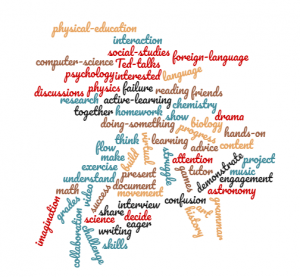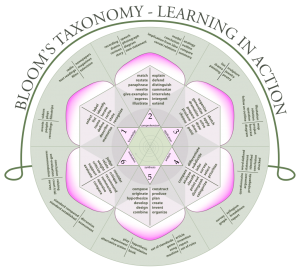We teachers have some choices that we have to make right now. Many of us have established some connection with students via technology, but what happens during those times of connection is tremendously varied. Social media has offered us numerous experts who can suggest ideas, strategies, and even best practices—and yes it is at least a start—but that advice is just as varied.
I don’t think it is really that difficult to provide excellence in learning, even when the element of “unknown” is overarching everything we do. First, let’s agree that we do not have a definition of what excellent in teaching looks like in this situation. What we are doing now is not true online learning, it is more of a stop gap measure—a temporary solution to get us through unprecedented times. So, we cannot expect these teachers to be providing the same caliber of education as they might in person. This is a CRUCIAL point to understand for teachers, parents, administrators, politicians, students, unions, and state leaders.So, what then can we do?
Simple. I want you to do 2 things for me:
- think about what you do, why you do it, and what you love about your discipline, and what you love about education. Now, if I know teachers, you have a list a mile (sorry world outside of USA…I mean a kilometer) long. Now, prioritize that list with your most vital elements at the top….and you cannot list all of them for a tie at the top. YES, I know you well. Now, choose your top 3.
- Think about your discipline, area of study, skill area or subject area. You have 2 months left this year and you know how far along you were before Corona hit. What were you originally hoping to get through by the end of the “normal” semester? Now, prioritize that list with your most vital content/topics/skills at the top….and you cannot list all of them for a tie at the top. YES, again I know you well. Now, choose your top 3, but make sure these are specifics, not general topics like “history of the world” (Yes I know you well). And if any of you put the word “test” or “quiz” on any list, remove it immediately. If you put the word “grades” in either list, then also give yourself permission to remove it immediately. Now, choose your top 3.
Ok, now you have your marching orders. Take your top 3 from each list and merge them together. This is all you focus on for the rest of the semester. I am not suggesting the other items are not important, but they are not going to be part of what you do. So, yes, grade level teachers should collaborate on one (or both?) of these lists. Yes, department chairs should help department members with these lists. But, I will also challenge you that it is 100% ok if your lists are different. In fact, I will suggest that is a good thing.
How to do that? My “expert” advice (you knew it was coming, right) is this: Make sure the time students spend focused on your class is a combination of multi-media and multi-stimuli experiences. Let them do some research, let them do some “problems”, let them discuss, let them debate, let them think out loud, let them present something, let them play a game, let them respond to a video, let them record their own video, let them analyze real world events related to your subject area, let them collaborate with other students to make something, let them read, let them draw, let them express their ideas, let them read an article, let them do some writing, let them peer review other student work, let them demonstrate their learning, let them use a camera to take a picture, let them interview someone, let them interview each other, let them teach another student, let them reach out to students in other parts of the world(PLEASE include this one). And if you can relate the current state of the world (aka corona) to your topic area, DO IT. If you are struggling for what to do, then you can always use (nerd alert) Blooms Taxonomy to give you some ideas–but try to work your way UP the listYou can make online learning engaging, interactive, and valuable.
For 2 decades, I have had a motto that I still believe holds true regardless of where and how learning happens:
Immerse your students. Let them see it, feel it, engage with it, create something with it, struggle with it, and learn to love it. Find hands-on experiences that bring together their imagination, your passion, their passion, and their learning. Students don’t mind hard work if they connect with it.


